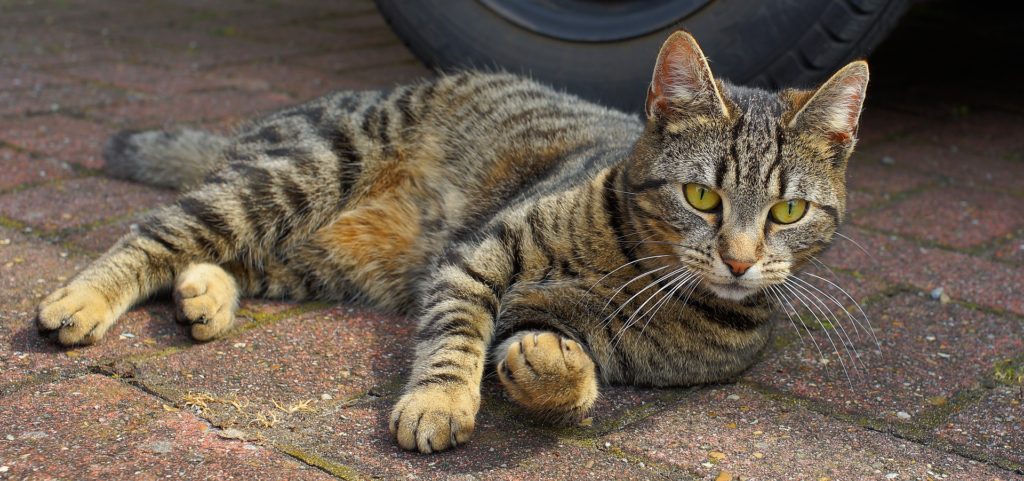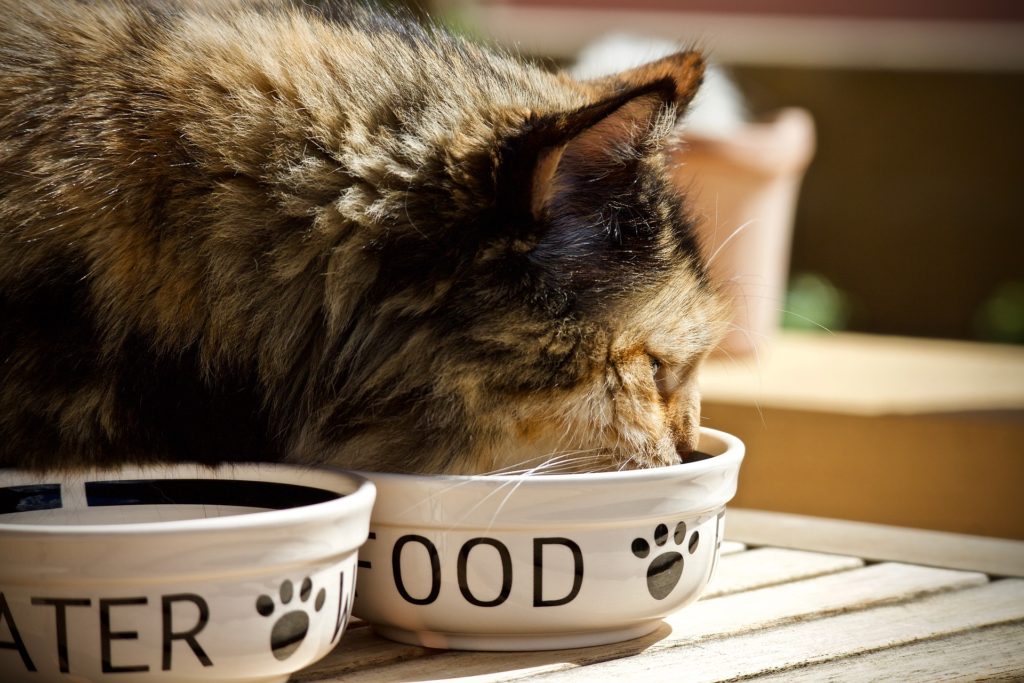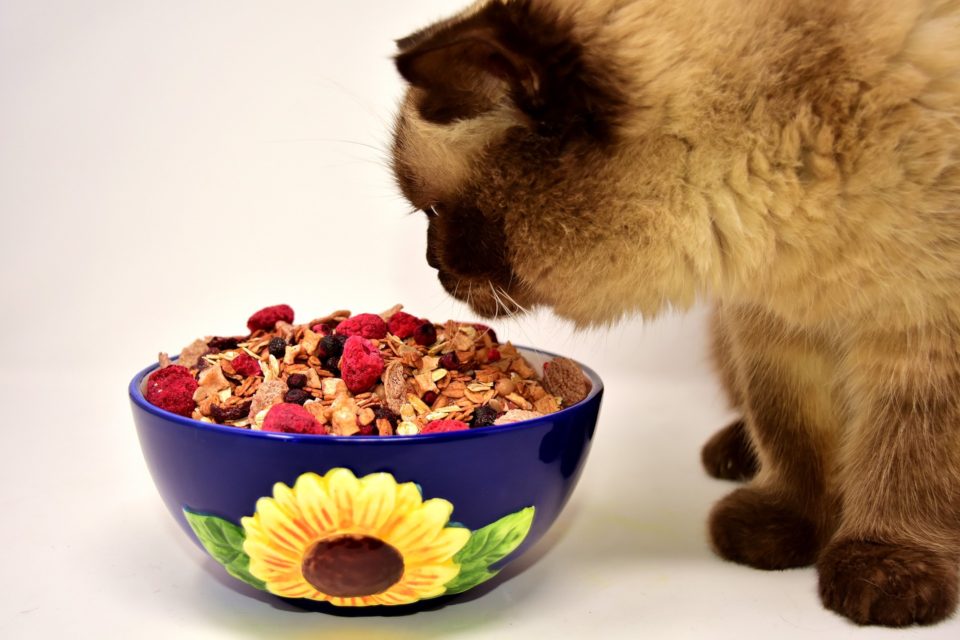Cats are obligate carnivores. This means that their diet consists entirely of meat. You may see your cat nibble on grass or plants, but this is not part of their nutrition and done usually for emesis.
The cat foods on the market need to be marked as balanced. You know that your cat’s food is balanced if it has the AAFCO guarantee on the label. These foods are formulated to have all the nutrients, including vitamins, minerals, and protein that your cat needs.
Commercial Diets
Commercial cat food comes in dry, semi-moist, and canned.
The Semi-moist and canned foods contain more moisture which is important for your cat, since many cats don’t drink enough water.
Dry food is popular for it’s cheaper price and increased convenience. When storing dry food, it is important to either keep the food in the original, resealable bag or in an airtight container. Dry food that has been sitting out will slowly lose vitamins and can become rancid.
Many cats are finnicky eaters. They can become fixated on just one type of food as kittens. I recommend offering several types of food to young kittens to help keep them versatile as adults.
In general, you want your cat to be able to enjoy their food, limit vomiting, flatulence, itchy skin, and diarrhea.
Which Brand Do I Choose?
Deciding which diet is safe and nutritious can be confusing with so many brands on the market. The Pet Nutrition Alliance has a list of companies that employ full time veterinary nutritionists and PhDs, such as toxicologists, on staff. I recommend choosing companies with these experts permanently on staff.
It is also important to look at the AAFCO label on the bag to make sure that there was a feeding trial done on your cat’s food. Surprisingly not all companies do this. This ensures that your pet is not the first animal to consume this product. See this link for a list of questions to ask your pet food company.

Maintaining a Healthy Weight
Make sure your cat maintains a healthy weight. This will help prevent Type 2 diabetes, grooming difficulties, and arthritis.
We have recently discovered that cats need to keep their carbohydrates in their diet to a minimum. Type 2 diabetes in cats is often a consequence of eating too much, and having too many carbohydrates in their diet.
Refer to this page for a chart of body condition scoring.
How Much Should I Feed My Cat?
The formula for calculating caloric requirements for dogs and cats is:
RER (Resting Energy Requirements)= 70(weight in kg)^(3/4)
So, a 10 pound cat will have an RER of 216 calories per day. Each cat will then have a different multiplier depending on their life stage. For a neutered adult cat of 10 pounds= 1.6 x RER= 345 calories per day. This will often have to be adjusted down or up based on each individual cat.
You can use the back of the dry food bag or look at the wet food label to find out how many calories there are per can or cup.
Please see OSU’s website for more details.
You can also use the toolkit by Pet Nutrition Alliance to calculate your pet’s caloric needs.

Treats
Treats are generally higher in carbohydrates. Treats should not exceed 10% of your cat’s total diet.
Grain Free Diets
Grain Free Diets have been associated with heart disease in both dogs and cats.
Homemade Diets
Because it its difficult to have the correct balance of protein with a homemade diet, this should only be done under the direct supervision of a veterinary nutritionist.
Raw diets
Raw diets predispose your cat to toxoplasmosis and other food borne illnesses. Many of these diseases also infect humans. This is why most veterinarians will not recommend raw diets for your pet.
Milk
It may surprise you to know that many cats are actually lactose-intolerant and may have an upset stomach from drinking cream or milk.
When to Visit Your Veterinarian
If your cat is not eating or losing weight please consult with a veterinary professional.

References and Further Reading:
Cornell University College of Veterinary Medicine (July 2017) Feeding Your Cat. https://www.vet.cornell.edu/departments-centers-and-institutes/cornell-feline-health-center/health-information/feline-health-topics/feeding-your-cat
FDA (June 2019) FDA Investigation into Potential Link between Certain Diets and Canine Dilated Cardiomyopathy. https://www.fda.gov/animal-veterinary/outbreaks-and-advisories/fda-investigation-potential-link-between-certain-diets-and-canine-dilated-cardiomyopathy
OSU Veterinary Medical Center (December 2020) Basic Calorie Calculator. https://vet.osu.edu/vmc/companion/our-services/nutrition-support-service/basic-calorie-calculator

